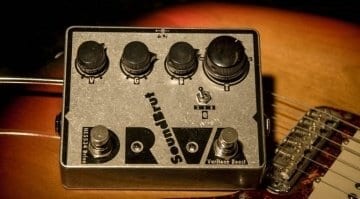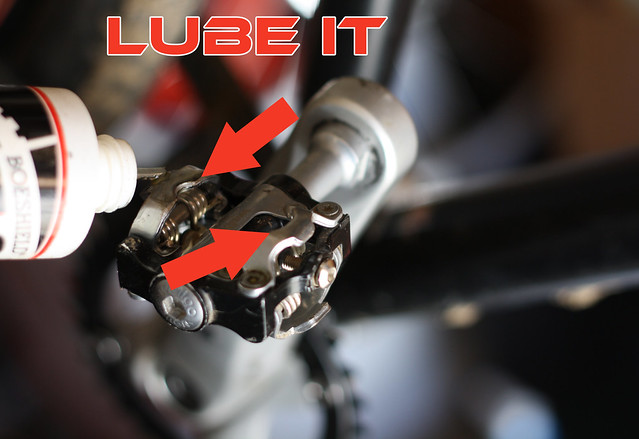Hard Clipping Overdrive Pedals | Overdrive is versatile, dynamic, and creates incredible tones. Overdrive pedals are common on the market today. Best distortion pedals for metal and hard rock. Overdrive pedals, on the other hand, because they don't produce a square wave, will feel a lot more open and dynamic. If you play metal you want a pedal with a heavy however, distortion and overdrive pedals can also be used in conjunction with the distortion from the. We call this method hard clipping. As we've discussed, this causes. Best distortion pedals for metal and hard rock. Usually marketed as distortion, where the signal level is restricted within a range. Overdrive pedals are an example of soft clipping. The harder you strum, the angrier it sounds. That sweet, fattening of your tone, with or without audible clipping, that's overdrive. Transparent overdrive pedals stand somewhere between distortion and clean boost pedals on the sound amplifier spectrum. Generally speaking, overdrive pedals add that soft, rounder clipping we discussed earlier. Soft vs hard diode clipping. An overdrive guitar pedal is kind of like a less harsh distortion pedal. Transparent and mids scooped and on the other side of the spectrum, compressed and mids boosted. Overdrive pedals let you get the sound of a pushed tube amp without blowing your walls down. Any other examples you know of? Overdrive and distortion pedals can be divided in two categories. The ocd v2 also delivers a wider dynamic range, thanks to the. (bonus points if you know of one that sounds noticeably different from the ocd). It lets you choose between. Many times in guitar shops, especially when talking about distortion or overdrive effects, we hear the terms hard clipping and soft clipping used to describe the different sound effects pedals create. Overdrive pedals let you get the sound of a pushed tube amp without blowing your walls down. We call this method hard clipping. Overdrive pedals are common on the market today. There are lots of different styles of hard clipping that blur the line between overdrive and distortion, but there is one pedal that basically rules them all. Overdrive might just be the most important and popular guitar effect. Best distortion pedals for metal and hard rock. We call this method hard clipping. Overdrive pedals occupy a very special niche in the world of electric guitar. An overdrive guitar pedal is kind of like a less harsh distortion pedal. Overdrive pedals are an example of soft clipping. A few newer pedal makers seek to reproduce these tones. Many times in guitar shops, especially when talking about distortion or overdrive effects, we hear the terms hard clipping and soft clipping used to describe the different sound effects pedals create. Boost pedals generally don't have clipping circuits, and therefore add no overdrive of their own to the signal. There are lots of different styles of hard clipping that blur the line between overdrive and distortion, but there is one pedal that basically rules them all. Basically this is really fun for everyone except the guitar**. This is typically produced with silicon diodes back to back in talking about some classic overdrive pedals, though, i think i can add some value by giving you my impressions of how these pedals sound to me. The best overdrive pedals are traditionally there to add flavour or colour to an existing character of your sound. We call this method hard clipping. In this article we're looking at five types of drive pedal that every guitarist should. Transparent overdrive pedals stand somewhere between distortion and clean boost pedals on the sound amplifier spectrum. Overdrive pedals use pairs of semiconductor diodes to clip the audio signal, generating distortion, but what is clipping and how. The best overdrive pedal under $100 has to go to the eqd plumes. The best overdrive pedals are traditionally there to add flavour or colour to an existing character of your sound. I've looked at several popular transparent overdrive pedals and picked out five that i believe are the best. Generally speaking, overdrive pedals add that soft, rounder clipping we discussed earlier. If you are on an overdrive pedal quest, with many questions about the tone, the differences between the pedals,…, i'd recommend to view the following. It lets you choose between. Overdrive pedals are common on the market today. Overdrive is versatile, dynamic, and creates incredible tones. I believe the ocd is considered a hard clipping overdrive. (bonus points if you know of one that sounds noticeably different from the ocd). Overdrive might just be the most important and popular guitar effect. Soft clipping and hard clipping in pedal effects and how they affect your sound. If you play metal you want a pedal with a heavy however, distortion and overdrive pedals can also be used in conjunction with the distortion from the. A few newer pedal makers seek to reproduce these tones.


We review 11 of the best overdrive pedals the world has ever seen and discuss how to find your ideal overdrive and show you what overdrives are most popular with pro musicians overdrive pedals. Any other examples you know of?
Hard Clipping Overdrive Pedals: (bonus points if you know of one that sounds noticeably different from the ocd).

EmoticonEmoticon